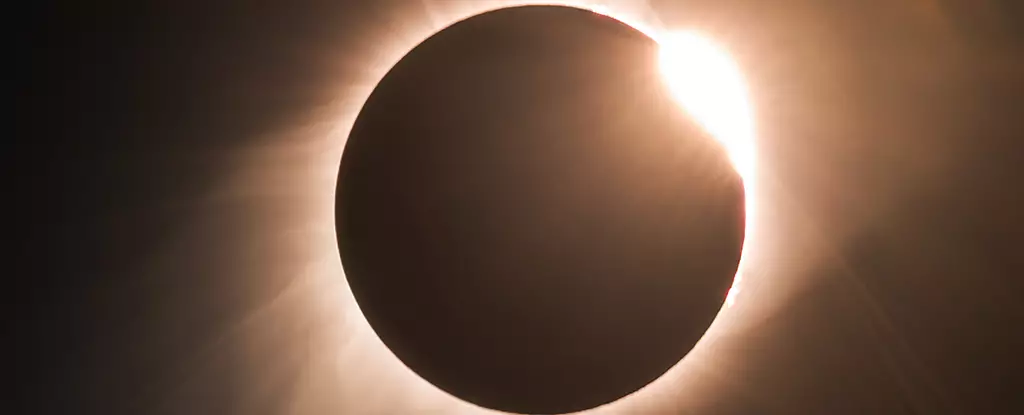

Millions of people will have the extraordinary opportunity to witness a momentous event in the celestial world on April 8, 2024 – a total solar eclipse. Embarking on a journey that starts approximately at 1 pm CT, individuals across a vast expanse will gear up with protective glasses to marvel at this awe-inspiring spectacle. While this may seem familiar to some, reminiscent of the 2017 total solar eclipse that swept through a 70-mile-wide band of the United States, the forthcoming eclipse promises to be even more enthralling. Scientists from NASA, brimming with excitement, have shared the exceptional features that set this event apart from previous ones.
Total solar eclipses, while not exactly rare, possess certain characteristics that render each occurrence unique. The 2024 solar eclipse distinguishes itself in several ways, from its trajectory across the United States to an abundance of solar activity, not to mention the multitude of scientific projects planned for this fleeting phenomenon. In 2017, the continental US witnessed its first coast-to-coast total eclipse since 1918. Nonetheless, major cities like Atlanta and Charlotte did not fall within its path. This year, however, a significantly larger population will be able to experience the eclipse without undertaking extensive travel. Spanning from Mexico to northeastern Canada, this eclipse is poised to be the most widely observed in the US, captivating 31.5 million individuals who can simply step outside their homes to witness this extraordinary event. Cities such as Dallas, Cleveland, and Indianapolis will afford ideal locations for viewing the total eclipse. Based on one’s geographical positioning, there will be a window of approximately 3 to 4 minutes to witness the unique phenomenon of the Moon obscuring the Sun completely. Remarkably, totality will last slightly longer than it did in 2017.
For those who miss this year’s eclipse, the next opportunity to witness a total solar eclipse visible in the contiguous US will not arise for several decades. The years 2044 and 2045 are the next occurrences, but they will not pass through Cleveland or Indianapolis. As anticipation builds for this rare event, scientists are excited about the increased solar activity expected during the eclipse. As the Sun approaches its solar maximum, it has been emitting solar flares, and researchers hope to witness a coronal mass ejection (CME) during the eclipse. CMEs are rapid eruptions of plasma originating from the Sun’s outer layer, known as the corona. The visual impact of a CME departing the Sun during the eclipse would undoubtedly be a spectacular sight. Moreover, it may lead to heightened aurora borealis activity a few days later. Even without a CME, the visual imagery of the eclipse is expected to be more dynamic compared to the 2017 eclipse, featuring distinctive, wispy solar prominences radiating from the Sun.
Solar eclipses hold great significance in the scientific community due to the unique research opportunities they offer. They enable scientists to conduct experiments and gather data that would otherwise be unattainable. One of astrophysicist Nour E. Raouafi’s examples, during a recent roundtable, was the 1919 eclipse, which confirmed Albert Einstein’s theory of relativity. This eclipse is anticipated to become the most observed total solar eclipse in history, with NASA and other institutions deploying a range of technologies, including radar, balloons, spacecraft, and jets, to conduct experiments and collect data. NASA’s primary focus is to track changes in density, wind speed, and temperatures in the ionosphere, the Earth’s upper atmosphere, during the event. In contrast to the 2017 eclipse, there are now two Sun-monitoring spacecraft orbiting our star, offering an unprecedented opportunity for NASA to closely observe the Sun from two different space observatories while simultaneously conducting ground-based studies of the eclipse. This dual approach promises to yield the most comprehensive dataset on a solar eclipse ever acquired.
Beyond the scientific community, numerous citizen scientist projects are also taking place. NASA is encouraging the public to utilize various tools, including ham radios, telescopes, cameras, and smartphones, to capture images, sounds, and observations during the eclipse. By actively involving people from all walks of life, these projects enable a broader understanding and appreciation of the celestial wonders surrounding us.
The impending 2024 total solar eclipse is poised to captivate millions across the United States. With its unique path, increased accessibility, and exciting scientific prospects, this rare and remarkable phenomenon promises to leave a lasting impression. As technology advances and citizen scientists contribute to the observation and documentation of this natural spectacle, our understanding of the universe continues to expand. Let us brace ourselves for an unforgettable solar event that will undoubtedly inspire wonder and curiosity in the hearts of both the public and the scientific community.
Rogue waves have long been a subject of fascination and terror in maritime lore. These…
As the world grapples with public health challenges, especially those posed by infectious diseases, the…
The Sombrero Galaxy, also known as Messier 104, embodies a breathtaking blend of spirals and…
In recent advances in quantum electronics, a groundbreaking discovery leveraging the concept of kink states…
In the intricate tapestry of nature, ice often exists in a delicate balance with liquid…
In an astonishing event that captured global attention, a rogue object from beyond our Solar…
This website uses cookies.